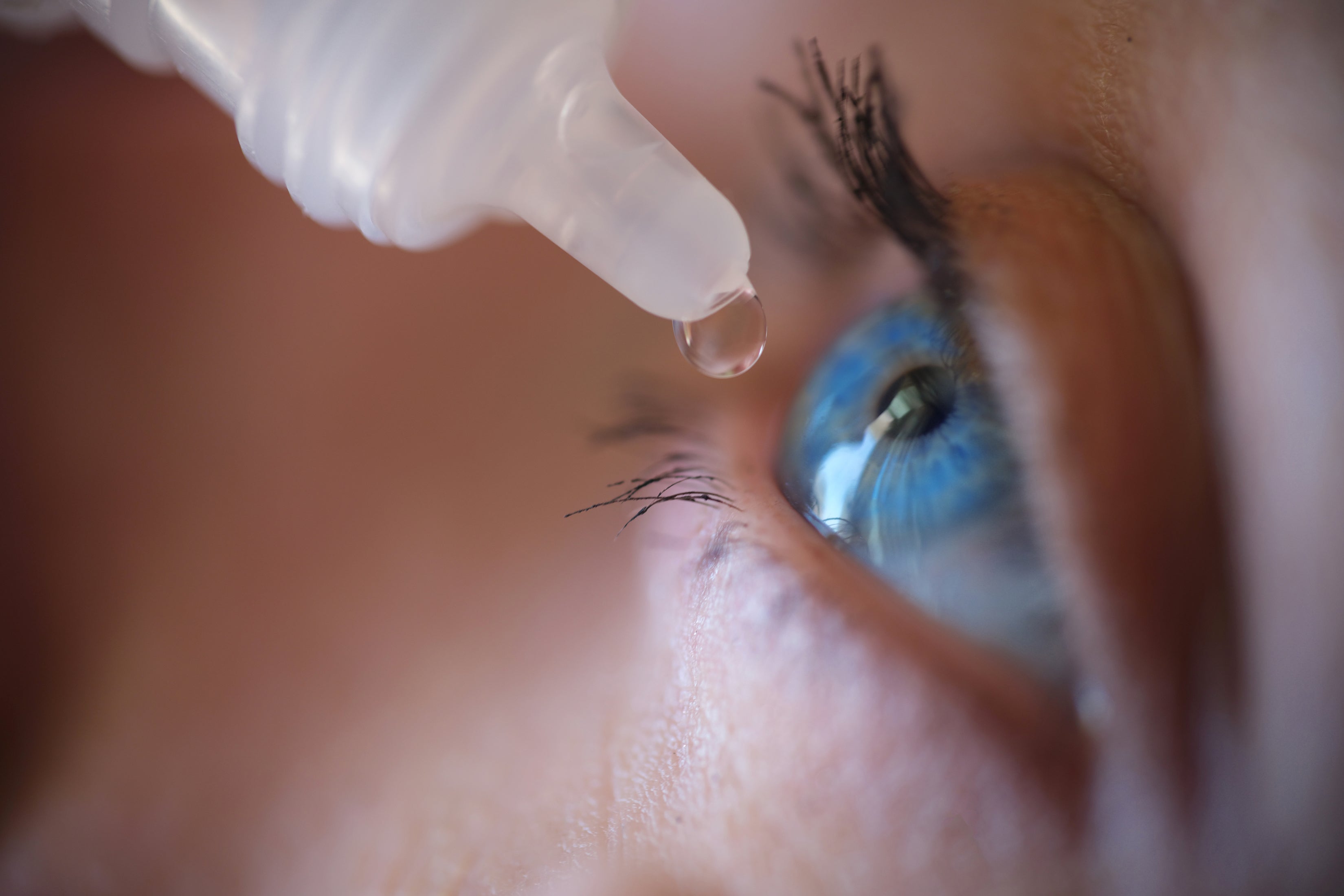
Health professionals are investigating an outbreak of an antibiotic-resistant microbe found in certain bottles of lubricating eye drops, or artificial tears.
According to the U.S. Centers for Disease Control and Prevention, a total of 68 infections have been reported as of March 14. Three people have died, eight have lost vision, and four have had an eye surgically removed. At the Food and Drug Administration’s request, the pharmaceutical company Global Pharma Healthcare has initiated a recall on artificial tears and eye ointment sold by EzriCare and Delsam Pharma, based in New Jersey and New York State, respectively, though the products were manufactured in India.
The government agencies say these products were tainted during manufacturing with a rare strain of the bacterium Pseudomonas aeruginosa that is resistant to the common, powerful antibiotics known as carbapenems.
“Only users of the specific brands being recalled should be concerned due to the recent recall,” says Christopher Starr, an ophthalmologist at New York City’s Weill Cornell Medicine and a clinical spokesperson for the American Academy of Ophthalmology. “Before putting eye drops in, everyone should double-check the bottle’s label to be certain it isn’t one of these recalled products. But at this time, there is no concern with using other eye drops.”
Scientific American spoke with Christina Prescott, director of the division of cornea services and vice chair for education at the department of ophthalmology at NYU Langone Health, about the infections.
[An edited transcript of the interview follows.]
What stands out to you about this outbreak?
Our patients don’t usually die, especially from something that we consider pretty benign usually, so it’s pretty shocking. I think, at least, it’s bringing a lot of awareness to an issue that people have never really thought of.
We do see a lot of ocular infections. That’s something we’ve always seen with contaminated products, products that aren’t manufactured properly. There have been issues in the past with contact lens solutions. Hopefully this’ll at least make some people more aware of potential dangers of things that seem pretty benign such as artificial tears and then be more mindful of their current practices. So hopefully, in the long run, it’ll lead to a decrease in eye infection because people will be more mindful and develop better habits.
How common are eye infections like this?
Incredibly rare, especially with people dying. There are outbreaks every so often. It seems like every few years, there’s an outbreak of some kind of contaminated solution. But this is the first time that I can remember, at least in the U.S., seeing issues with actual patient deaths occurring from contaminated eye drops. We’ve seen lots of cases of blindness, unfortunately, but the death is something new.
How can people stay safe from infections like this?
These eye drops were what’s called preservative-free. Usually, with preservative-free eye drops, we only dispense them in single vials that look like little ampules—because once you open them, and they’re exposed to any kind of bacteria, the teardrops themselves are a very good environment for things to grow. If you have something that gets in there, normally if it’s a preservative-free one, you’re going to throw it out after you use it, so [that contamination] doesn’t matter.
The drops here [in the latest cases]—they just took a regular bottle with no kind of safety mechanism at all to prevent anything from getting into that bottle. If it says, ‘Preservative-free,’ the bottle should indeed be a single vial, or the bottle should look very strange and be a little awkward because it’s going to have to have a way to keep clean.
While these eye drops themselves were the problem, a lot of times patients don’t have the best sterile technique. You don’t want to touch [the bottle’s tip] with your hand. You don’t want to touch it to your skin. You don’t want to touch it with your eyelashes because any bacteria that can get in there can then grow in the eye drop bottle, and then you can get a much worse infection. This infection … has been traced back to the actual production of these drops. But eye drops can get contaminants from other outside sources, so it does bring up that important safety point.
What are the signs of an infection, and what should someone do if they experience those symptoms?
Pseudomonas is a very fast-growing organism. [At the beginning, an infected eye will be] a little red, a little itchy—a lot of times the eye will feel scratchy or sandy. Contact lens wearers will sometimes think they have something on their contact lens. It’ll be about a day or two of that, and then the vision will actually get pretty blurry pretty quickly, and the eye will become red and painful. Sometimes if you look at the mirror, you’ll even see either a white or a creamy yellowish dot on the cornea, which is the clear part of the eye. [Infections] can grow quite quickly, and even within a couple of days, they can lead to thinning of the cornea as the infection basically takes over the healthy tissue. And in some scenarios, they can even lead to perforation of the cornea.
Definitely make an appointment with your ophthalmologist as soon as possible. Eye infections are pretty common, and the sooner that they’re seen and treated, the better. Usually, if we catch things early, within a couple of days, we can very successfully treat them.
How does treating P. aeruginosa usually work?
It’s pretty common, and it’s one of the more aggressive infections. Normally it’s pretty sensitive to a lot of different antibiotics. The good thing is: it gets really bad very quickly but also usually responds to treatment very, very quickly. Usually, within even a day or two of starting appropriate therapy, the patients will notice an improvement.

